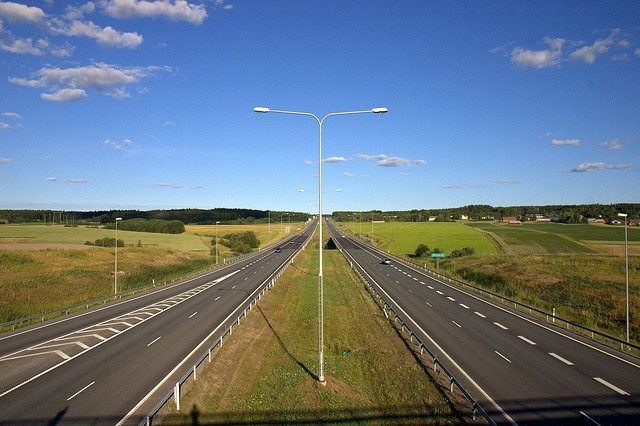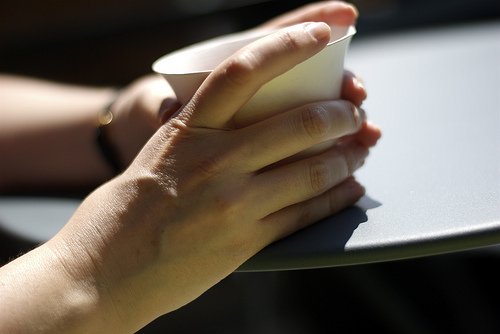
Photo by kizzzbeth.
For all our environmental woes, the U.S. is making progress in one exciting area: The word “compost” is becoming a household term, while more and more cities are starting to implement wide-scale composting programs. And this shift is good for more than just our landfills. We Americans are pretty wasteful when it comes to food — it’s the single largest type of municipal solid waste that ends up in landfills — and throwing it out with the trash leads to methane emissions, a greenhouse gas that makes carbon dioxide look harmless.
But as composting becomes more popular, so do the companies trying to capitalize on the uptick: The number of packaging products marketed as compostable — or with claims that people might equate with compostable, such as “biodegradable” or “plant-based” — has exploded.
Like the natural foods market, where highly processed snacks with genetically modified ingredients can be called “natural,” all the eco-marketing for food packaging is causing some confusion. There are cups made from corn, plates made from sugarcane, biodegradable dog poop bags — but “bioplastics,” as these are generally known, are not always truly compostable. Confused yet?
Here’s the tricky part: “Bio” often simply means the material will biodegrade in a short time frame compared with conventional plastic — or break into lots of teeny tiny pieces of plastic. At the same time, some products are plant-based, but not compostable.
“You can have oil-based plastics that are compostable and plant-based plastics that are not compostable,” says Michele Young, organics manager for the city of San Jose. “Compostability and degradability are not based on the feedstock. It’s literally based on the chemical signature, the way the plastics are put together.”
California has started to legislate the claims that brands can put on their packaging products, so a package has to meet certain standards if it’s going to say “compostable” or “biodegradable” on it. But that’s relatively recent; and it’s rare. Nationally, there’s nothing legally wrong with a company printing those terms on its products even if they don’t actually break down at compost facilities. In general, though, the term “compostable” does tend to hold the most credibility; “biodegradable,” in the eyes of Dan Matsch, compost manager for recycling and zero-waste organization Eco-Cycle, is often more a greenwashing tactic than anything else.
Don’t panic, it’s … plastic?
What about things like coffee cups and to-go food containers? They look both recyclable and compostable, don’t they? Well, it turns out those items only hold food and drinks because they’re lined with plastic. Does that super-thin layer of plastic keep them from being compostable? It depends who you ask.
Some cities, like San Francisco, collect plastic-coated packaging with their compost.
“We did that after seeing how the plastic separated and got screened off, and there was no visible plastic left in the compost,” says Jack Macy, the city’s commercial zero-waste coordinator. “We saw a benefit of being able to compost the paper fiber, instead of just land-filling that stuff.”
Plus, it’s easier for encouraging residents to compost if they can take the milk carton they’re already going to throw away, and use it to store their compost.
But others are concerned that the plastic ultimately ends up contaminating the environment, in such small fragments that they are nearly invisible on the surface.
Now, the amount of plastic we’re talking about is relatively small — as Macy says, plastic-coated paper cartons tend to be about 80 to 95 percent compostable. But places like Eco-Cycle have spent time analyzing our compost-filled future, and they’re concerned that if we don’t put proper policies in place now, there’s going to be a lot of plastic in our soil later.
Eco-Cycle conducted a study [PDF] with Maine-based Woods End Laboratories that found the plastic coating breaks down into tiny plastic fragments — “microplastics” — which don’t actually disappear. Instead, they contaminate the finished compost as well as the soil where that compost is used, where worms and insects will ingest it. And, as some research has shown, those fragments also ultimately get washed out with the rain and feed into rivers, lakes, and oceans, where they impact marine ecosystems. (It’s not entirely unlike the microplastic that gets released while you put your fleece jacket in the washing machine.)
Woods End founder Will Brinton calls the danger of microplastics in the ocean “a major international calamity.” And he says runoff from plastic-contaminated soil has the potential to exacerbate that problem if more communities begin composting on a municipal level and accept plastic-coated products. That’s why Matsch from Eco-Cycle thinks it’s so important to confront the issue now, before it’s too late. “If we don’t get in front of this plastic problem, it’s going to bite us later on when we find that we’re putting significant plastics into the environment,” he says.
Cedar Grove, a compost manufacturer in Washington, doesn’t accept plastic-coated products, although it used to. They stopped, said Vice President Jerry Bartlett, after noticing that even though things like milk cartons were 75 or 80 percent cardboard, “the plastic wouldn’t break down, so the composting process could never get to the cardboard. So we ended up having big pieces of plastic.”
But Macy says San Francisco hasn’t had a problem with plastic contamination. There’s no easy, universal rule to follow, in part because different compost facilities use different processes, and some have more trouble with plastics — and even with bioplastics — than others. That’s one of the (many) challenges facing an industry that has a whole lot of growing to do before the ins and outs of compost are something the average person is going to care about even a little bit. And if you’re a home composter, you likely care very much — but most of this will not apply to you because compostable plastics are designed to break down at temperatures much higher than backyard compost heaps will ever reach. So don’t even bother with them.
Sorting it all out
When compostable plastics don’t end up in a compost bin, there’s really nothing green about them. In fact, when they end up in landfills, the compostable packaging just ends up contributing to methane emissions.
And because so many compostable plastics are made to look like real plastic, there’s another layer of confusion: When clear compostable cups end up in the recycling bin, they can actually contaminate the plastic recycling process.
If the recycling facility is able to identify the compostable items, they can screen them out, but that means extra steps (and, probably, extra labor costs). “People feel like they’re doing the right thing and then if it ends up in a landfill anyway, you haven’t really gained anything,” says Young.
She describes composting today as similar to the early days of recycling, before the proper infrastructure and public education efforts were established. And for now, the bottom line is to find out what your local composting facility does and does not accept.
“Recycling was very, very confusing in the beginning, and there was a big outcry. People didn’t know what to buy, or what to do with it,” recalls Young. But now, she adds, “people have figured that out to a large degree. Food waste and compostable plastics represent the next generation of: where can it go, how do I sort it?



